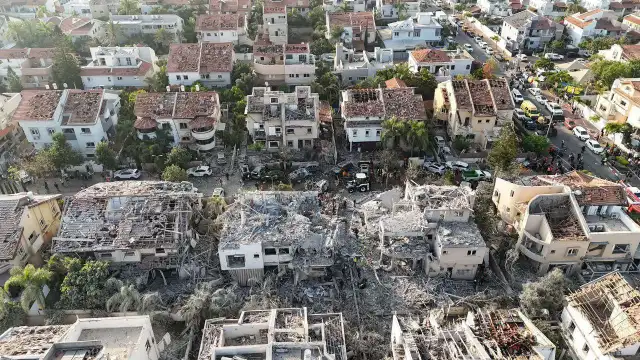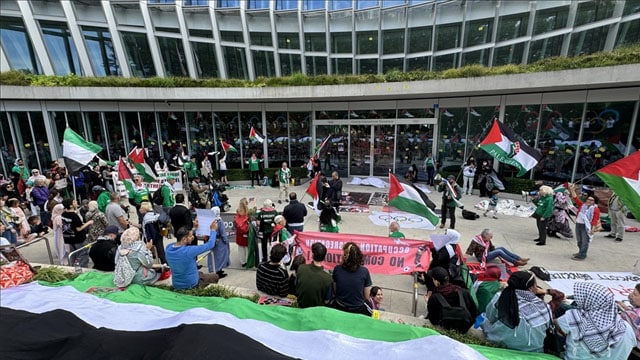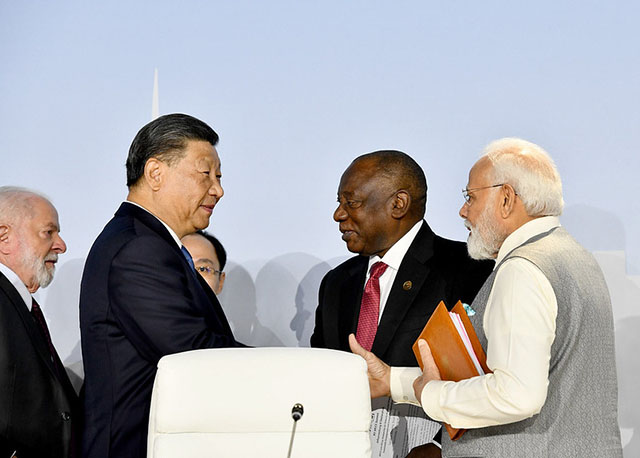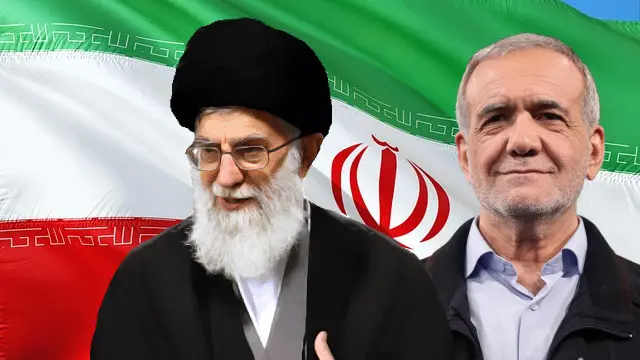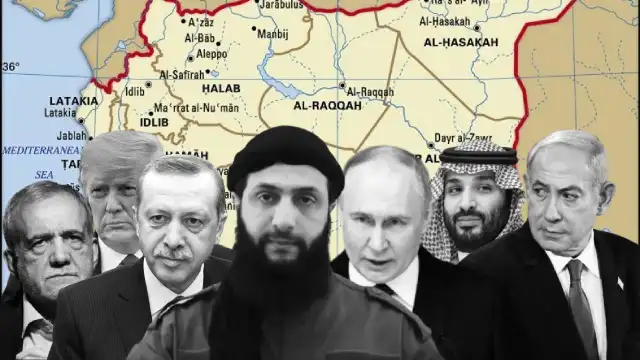After Israel launched attacks on Iran on Friday, June 13th, Tehran’s officials appeared disarrayed. However, a visible threat of such an attack had been looming over the Islamic Republic for quite some time. Similar to the earlier instances, Iran exhibited a severe lack of preparedness, resulting in major losses.
After Israel’s “Operation Rising Lion” wiped out the Iranian military leadership in the wee hours of Friday, including Chief of Staff Major General Mohammed Bagheri, Commander of the Central Headquarters Major General Gholam Ali Rashid, and Commander-in-Chief of the Iranian Revolutionary Guard Corps Hossein Salami, Tehran quickly replaced them with new faces and launched its retaliatory strikes targeting Israel.
While Israel’s early morning attacks on Iran were responded to with kamikaze drone attacks by Tehran, the US ally Jordan intercepted those drones within its airspace, providing a safety net to the Israelis.
This prompted Iran to launch its main retaliatory strikes under the codename “True Promise 3”—in continuation of the series of missile strikes targeting Israel in April and October 2024.
Iran retaliations: Claims and counter-claims
Under the “True Promise 3”, over a hundred hypersonic missiles were fired at Israeli cities, causing immense destruction across Israel.
While Israel’s attacks on Iran had delivered a major blow to the Islamic Republic, Tehran’s counter-strikes, launched late in the evening on Friday, Tehran time, lacked the surprise element as Israel was aware of an incoming attack.
Top Israeli leadership, including Prime Minister Benjamin Netanyahu, went into hiding as soon as air raid sirens started. Most civilians went into bomb shelters, and Iranian rockets rained on random targets across Tel Aviv and other areas.
While images and footage began to appear of Iranian missiles incessantly penetrating Israel’s missile defences and exploding upon impact on their targets, Tehran failed to provide any list of fatalities or targets its missiles have hit, raising questions about its overall goals.
Iranian reports say Israel’s Ministry of War has been hit. Independent sources in Tel Aviv have confirmed that the Israeli security headquarters suffered as well.
Israeli air defence batteries around other specific targets were also taken out before missiles came down on the higher-profile targets, Iran claimed without naming them.
The Islamic Revolution Guards Corps (IRGC) said in a brief statement after the strikes began that dozens of Israeli targets, including military sites and airbases, were being hit in pinpoint strikes.
In a second statement later at about midnight, the IRGC said the force’s missile and drone units had targeted the Israeli military bases that had been used to initiate the strikes on Iran, as well as industrial weapon manufacturing and other military sites deep in Israel.
The statement said intelligence collected, including through satellite imagery, showed dozens of ballistic missiles had hit their targets.
Social media users speculated Iran’s missile strikes have hit HaKirya (The Kirya), the Israeli military headquarters. Although eyewitnesses have claimed that Iranian missiles have hit what’s called “Israel’s Pentagon”, Israel has not acknowledged it.
State-controlled media in Israel provided a conservative estimate of losses following missile attacks from Iran. According to the Israeli media, which quoted the Israel Defense Forces (IDF), Iran has fired around 100 missiles, which killed three civilians and injured over 80, apart from destroying houses and infrastructure.
The IDF claimed that its Iron Dome system had intercepted most of the missiles.
Meanwhile, Iran has claimed that its air defence has shot down two F-35 jets. It has not provided any further details on these jets, while Israel has not acknowledged the losses.
If the news happens to be correct, as the Iranian media claims, then Iran will be the first country to shoot down F-35 jets. Siberia was the last country that had shot down two American F-16s during the 1999 NATO aggression.
How did Israel manage to launch attacks on Iran?
While this is the overall situation until Saturday, June 14th, morning, questions have been raised on how Israel could carry out attacks on Iran without facing any resistance.
Critics claim that Tel Aviv has managed to penetrate up to the higher echelons of Tehran’s security and military establishments. This has enabled it to access key intelligence, it’s alleged.
Friday was not the first time that Israel has carried out attacks on Iran and killed important figures in the country.
In 2024, Israeli strikes in Iran killed a top Hamas official visiting as a state guest during President Dr Massoud Pezeshkian’s presidential opening.
The data on the location was revealed due to an Iranian intelligence compromise.
Israel has also attacked Iranian industries following the latter’s “True Promise 2” in October.
Apart from these, it’s alleged that information leakage from Tehran’s higher security echelon helped Israel kill Hezbollah chief Hassan Nasrallah in September 2024.
Moreover, it was leaked Iranian intelligence that had helped Israel carry out more assassinations.
The lack of Iran’s preparedness can be blamed on a possibly compromised state security infrastructure, given the fact that Israel has a large number of operatives in the Islamic Republic working for its secret service, Mossad.
Moreover, the issue is also rooted in President Dr Pezeshkian’s excessive reliance on the West’s goodwill, which is driving his administration to seek a deal with the US President Donald Trump’s administration.
Weak diplomacy aids Israel in launching attacks on Iran
Dr Pezeshkian’s government has failed to see that the Trump 2.0 administration is actually using Israel to build pressure on Iran to accept a lopsided agreement that goes against Iranian interests.
Even though Dr Pezeshkian and Supreme Leader Sayyid Ali Khamenei have repeatedly said Iran won’t give up its right to peaceful usage of nuclear power under any pressure, they aren’t left with many choices.
Despite strengthening its ties with Saudi Arabia, a long-term foe, due to Chinese initiatives, Iran remains a pariah among most Sunni theocratic monarchies in the Middle East and West Asia.
Moreover, after losing Syria to the pro-West Islamist terrorists, with the decimation of Hezbollah in Lebanon, and the total routing of the Axis of Resistance, which helped the Islamic Republic’s diplomatic endeavours in the region, Iran has lost both its influence within the Arab League and outside.
After Mr Trump visited the Middle East last month and concluded defence and other treaties with the Arab monarchies, in a bid to wean them over from the China-Iran-Russia clique, the Arab monarchies have taken a further meek stance on the Gaza issue and on the overall Israel-Palestine conflict, providing an edge to Tel Aviv.
These manoeuvres have helped the US to ensure that the Arab monarchies remain mute spectators in the ongoing Gaza aggression, as well as during an attack on Iran.
While Yemen is the only Arab country to actively support Palestine with its incessant missile attacks on Israel, targeting its airport and key infrastructure, a lack of powerful payloads and precision strikes prevented the Houthis from delivering a significant blow to Israel.
Iran’s military shortcomings
Despite being in a very high-risk situation, Iran has failed to conceal its military-industrial complex from its enemies. Lack of investments and modernisation has also hindered the process, making these units vulnerable.
Iran has also failed to protect its military assets and personnel by upgrading its security systems. The lack of an active and effective air defence mechanism to counter missiles and flights has also added to the issue.
While Israel had a $27.5bn defence budget in 2023, apart from receiving US military aid and technology, Iran’s defence budget was $10.28bn, according to the World Bank, based on Stockholm International Peace Research Institute’s (SIPRI) data.
Following the Gaza aggression, Israel continues to receive higher American military aid, which continues even under Mr Trump.
Iran has decided to increase its defence budget to over $16bn, yet it will fail to match Israel’s budget.
Moreover, as Dr Pezeshkian has been planning to adopt an austerity regime to bring the crisis-ridden Iranian economy under control, it becomes harder for Tehran to increase its defence spending amid stringent American sanctions on oil export.
Therefore, when Israel attacks Iran using the surprise element, the latter gets bedazzled. Before it can manoeuvre, IDF manages to hit targets and kill them.
However, whenever Iran attacks Israel, it does it to create optics and to retaliate.
It lacks the element of surprise and ends up hitting random targets, which don’t add up to real, massive military losses for Israel compared to what Tehran suffers.
Tehran also lacks a clear hit list, unlike Israel. Thus, it continues to attack random targets rather than precise locations.
Despite the massive attacks on Tel Aviv on the intervening night of Friday and Saturday, Iran failed to annihilate any Israeli official or destroy key military resources.
The claims around hitting the HaKirya and downing two F-35s are not even verified now.
If the situation continues like this, it will become easier for the US to identify the weak spots of Iran and ensure it can carry out a large-scale aggression, as Tel Aviv has been demanding, against Tehran under the guise of stopping it from having a nuclear bomb.
Join our channels on Telegram and WhatsApp to receive geopolitical updates, videos and more.

